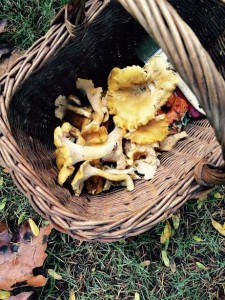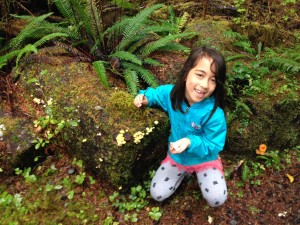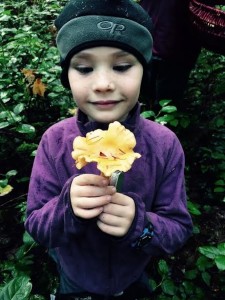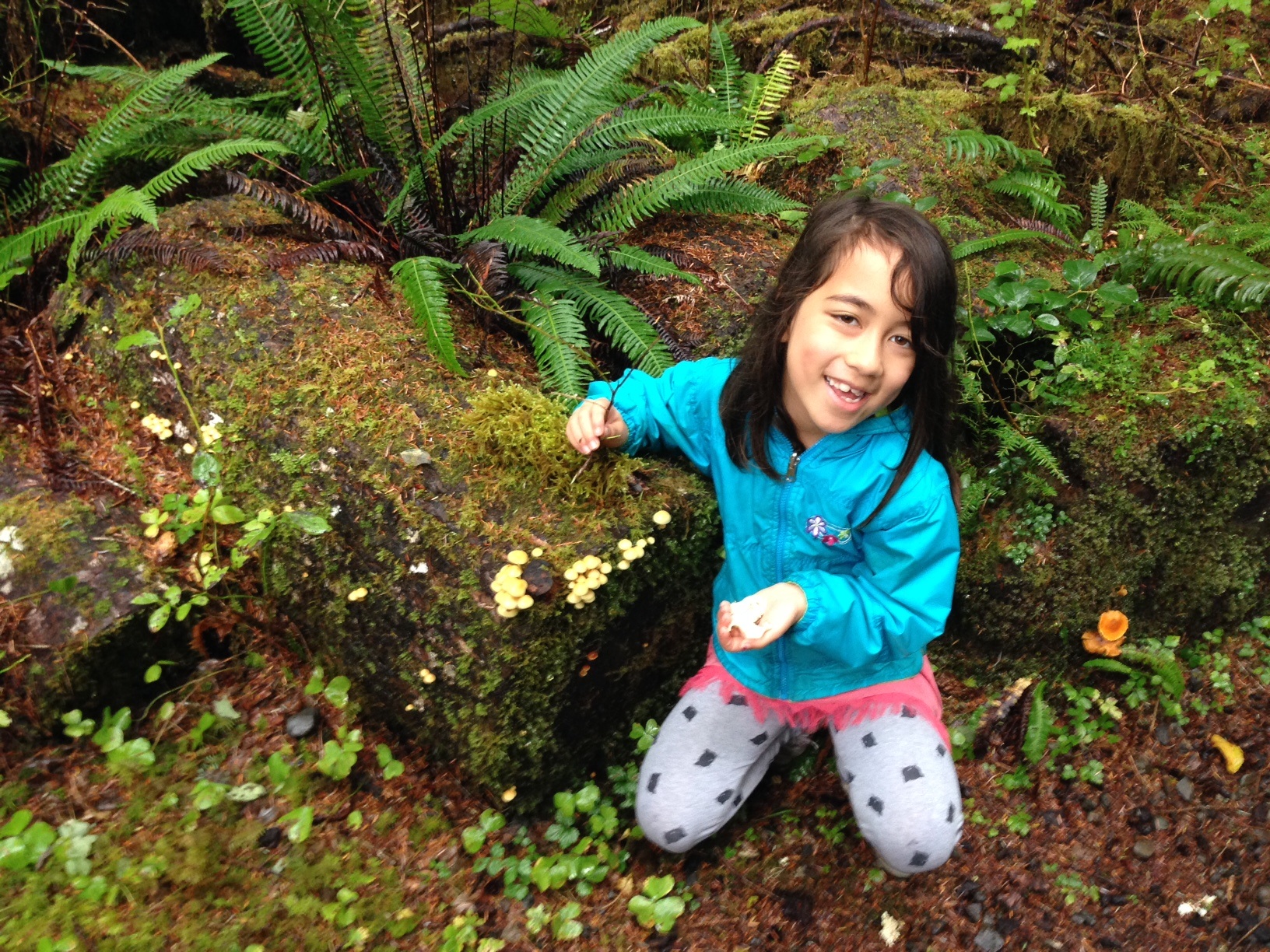By Jennifer Crain
 Examining samples of locally foraged mushrooms just before the South Sound Mushroom Club’s September meeting, I caught a whiff of maple syrup. Its source turned out to be a dried candy cap mushroom, one of the Lactarius species, popular for its sweet scent and flavor (it intensifies when dried). At the program’s intermission was proof that these common looking fungi are perfect for baking: two plates of candy cap sugar cookies were nestled among the savory appetizers.
Examining samples of locally foraged mushrooms just before the South Sound Mushroom Club’s September meeting, I caught a whiff of maple syrup. Its source turned out to be a dried candy cap mushroom, one of the Lactarius species, popular for its sweet scent and flavor (it intensifies when dried). At the program’s intermission was proof that these common looking fungi are perfect for baking: two plates of candy cap sugar cookies were nestled among the savory appetizers.

But identifying such a treasure out in the forest can be tricky. Would-be foragers should educate themselves and seek out a guide, says forager and educator Marie Lynn, who serves as the club’s vice president. She’s been interested in local mushrooms for three decades and started hunting and identifying them in earnest about four years ago. For the past two years, she’s served as a guide on mushroom forays through the club.
The Pacific Northwest is known for its edible mushrooms: chanterelles, morels, the occasional bolete. But these are only a few chips off a figurative iceburg of species that are not yet completely understood. Mushrooms are in their own biological kingdom, classified as neither plant nor animal, and fungi species are thought to number a million—or many more. So far, fewer than 100,000 of them have been described. Still, that’s plenty enough for a lifetime of study and a heck of a lot of good meals.
Carolina Sun-Widrow and her husband, R.J., will often go on a weekend foraging expedition with their girls, ages seven and twelve, to bring home the prized ingredients and educate their kids about native fungi. Mia, a second-grader, smiles whenever she finds another chanterelle out in the woods, its butter-hued flesh standing out against the dark earth or camouflaged in the leaf scatter.
Sun-Widrow says aside from loving to eat them, their family benefits from time in the woods together.
“Mushroom hunting equals hiking with a purpose,” she says, adding that their girls are getting an education when they forage for their own food.

When they saw how much chanterelles cost at the store, for instance, they were shocked—then proud knowing they had the skills to find their own for free. Foraging also helps their family make a connection to the biology of the forest.
“Being out in the woods…has made us more observant,” Sun-Widrow says. “In order to look for each type of mushroom, you have to know about its immediate surroundings or microhabitat. Does it grow on decayed wood or on the ground? Does it favor moss as a ground layer or pine duff or humus? (You have to know about) its broader surroundings. Does it associate with dead stumps, spruce, Douglas fir, pine? Does it prefer wetter forests? Old growth or new? There is an incredible amount of learning about forest ecology and symbiosis: a science classroom with gastronomic rewards!”
For all these reasons, Marie Lynn is enthusiastic about teaching kids to hunt mushrooms. But to start out, she suggests finding mushrooms in order to collect data. Poisonous mushrooms are only dangerous if ingested, she says, so touching any mushroom for study is safe. Learn to make spore prints, which are both educational and visually striking (try the tutorial here). Pick up a book, such as this one, to identify what you find.
If you do go out in search of omelet stuffers, don’t wing it. Lynn stresses that parents should educate themselves and seek out an expert before taking their kids along. Once you’re ready for the adventure of foraging, follow best practices for mushroom foraging:
-

With guidance, kids can learn to identify edible mushrooms, such as chanterelles. Photo credit: Jennifer Crain. Wear bright colors, such as a neon orange vest. If you get lost, you want to stick out like a sore thumb. Remember, mushroom hunters and deer hunters often share the same woods: make yourself visible and audible. Even if you’ve been before, never hunt mushrooms alone. Adults can stray from one another but make sure kids are in visual range of an adult at all times.
- Take a whistle. Adults should stay within whistling range of one another and use these formal signals: one blast to check in (here I am), two blasts to congregate (time to leave), three blasts to call for help.
- Dress right. Wear sturdy shoes and clothing that covers arms and legs. Waterproof boots are a plus. Mushroom hunting takes place off trail so you’ll need to protect yourself and your kids from scrapes, cuts, and poison ivy.
- Take the proper gear. A walking stick is good for balance and for combing through leaf litter. Also pack a flashlight, water, a small sharp knife, a small brush for cleaning mushrooms, and a lightweight basket for carrying them.
- Communicate. Before leaving, be sure you tell someone who isn’t going on the hunt where you’re going and when you plan to be back. If you need to leave the woods early, let your companions know you’re headed home.
- Never eat a mushroom unless you’re absolutely sure it’s safe. Even if a guide tells you a mushroom is okay to eat, only ingest one new mushroom per day. Cook everything you eat: never eat a raw wild mushroom.
Most important, if you want to eat the mushrooms you find, learn from an experienced forager. Join the South Sound Mushroom Club. It’s free to check it out for the first meeting and joining fees are reasonable, considering that membership includes some equipment. (Joining fees are $20 per year for an individual, $30 for a family. Thereafter, yearly fees are $6 and $12, respectively.)
The South Sound Mushroom Club’s next meeting is on November 19 from 7:00 to 9:00 p.m. at the Eastside Community Center. For more information, visit their website.
Thrifty Thurston highlights inexpensive family fun in Thurston County. The weekly series focuses on family-friendly activities throughout our community. If you have a suggestion for a post, send us a note at submit@thurstontalk.com. For more events and to learn what’s happening in Olympia and the surrounding area, click here.




















































